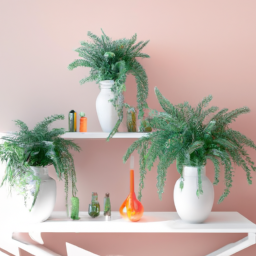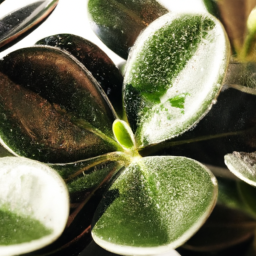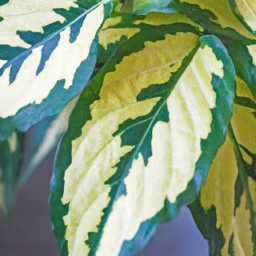
Have you noticed your indoor plants leaves turning yellow? Don’t worry, you’re not alone! Many plant owners experience this common issue, but it’s important to understand the reasons behind it and how to address it. Yellowing leaves can be a sign of various issues, from overwatering to nutrient deficiencies. In this blog post, we’ll explore the common causes of indoor plants leaves turning yellow and provide tips on how to help your plants thrive. Let’s dive in and learn how to keep your indoor plants healthy and vibrant!
Common Causes of Indoor Plants Leaves Turning Yellow
Overwatering
One of the most common reasons why indoor plants’ leaves turn yellow is overwatering. When you water your plants too frequently or give them too much water at once, the roots can become waterlogged, leading to a lack of oxygen and root rot. This can cause the leaves to turn yellow and eventually fall off. To prevent overwatering, make sure to allow the soil to dry out between waterings and always check the moisture level before watering again.
In addition, make sure that your pots have proper drainage holes to allow excess water to escape. You can also use a moisture meter to monitor the soil’s moisture level and only water when necessary. If you notice that your plant’s leaves are turning yellow due to overwatering, stop watering immediately and allow the soil to dry out before resuming a more moderate watering schedule.
Underwatering
On the flip side, underwatering can also cause indoor plants’ leaves to turn yellow. When you don’t water your plants enough, they can become dehydrated and unable to absorb essential nutrients from the soil. This can lead to nutrient deficiencies and cause the leaves to turn yellow and dry out. To avoid underwatering your plants, make sure to water them regularly and thoroughly, allowing the water to reach the roots.
It’s important to water your plants deeply, so the water reaches the bottom of the pot and encourages the roots to grow deeper. You can also mist your plants occasionally to increase humidity levels and prevent them from drying out. If you notice that your plant’s leaves are turning yellow due to underwatering, increase your watering frequency and make sure to water consistently to keep the soil moist but not waterlogged.
Nutrient Deficiency
Another common cause of indoor plants’ leaves turning yellow is nutrient deficiency. Plants need a variety of essential nutrients, such as nitrogen, phosphorus, and potassium, to grow and thrive. When plants lack these nutrients, they can’t perform essential functions like photosynthesis, leading to yellowing leaves. To prevent nutrient deficiencies, make sure to use a balanced fertilizer that provides all the necessary nutrients for your plants.
You can also amend your soil with organic matter or compost to improve nutrient levels and promote healthy growth. If you notice that your plant’s leaves are turning yellow due to a nutrient deficiency, consider using a specialized fertilizer or supplement to provide the missing nutrients. Be sure to follow the instructions carefully and monitor your plant’s progress to ensure that the yellowing leaves improve over time.
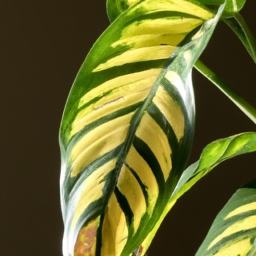
How to Prevent Indoor Plants Leaves from Turning Yellow
Understanding the Causes of Yellowing Leaves
When your indoor plants start to develop yellow leaves, it can be a sign of various issues that need to be addressed. One common cause of yellowing leaves is overwatering. When plants receive too much water, their roots can become waterlogged, leading to a lack of oxygen and nutrient uptake. This can result in yellowing leaves as the plant struggles to absorb essential nutrients.
Another common cause of yellowing leaves is underwatering. When plants do not receive enough water, they can become dehydrated, leading to wilting and yellowing leaves. It’s essential to strike a balance between watering your plants too much and too little to ensure they remain healthy and vibrant.
Additionally, yellowing leaves can be a sign of nutrient deficiencies. Plants require a range of essential nutrients to thrive, including nitrogen, phosphorus, and potassium. If your plants are not receiving adequate nutrients, their leaves may start to turn yellow as a result.
Tips for Preventing Yellowing Leaves
To prevent your indoor plants from developing yellow leaves, it’s essential to take a proactive approach to their care. Here are some tips to help keep your plants healthy and vibrant:
1. Water your plants correctly: Ensure that you are watering your plants appropriately by checking the soil moisture levels before watering. Stick your finger into the soil to see if it feels dry to the touch, indicating that it’s time to water. Avoid overwatering, as this can lead to root rot and yellowing leaves.
2. Provide adequate light: Different plants have varying light requirements, so it’s essential to place your indoor plants in locations where they can receive the right amount of light. Ensure that your plants are not exposed to direct sunlight for extended periods, as this can lead to sunburn and yellowing leaves.
3. Monitor humidity levels: Indoor plants can suffer from low humidity levels, especially during the winter months when indoor heating can dry out the air. Consider using a humidifier or placing a tray of water near your plants to increase humidity levels and prevent yellowing leaves.
4. Feed your plants: Ensure that your indoor plants are receiving the necessary nutrients by fertilizing them regularly. Choose a balanced fertilizer specifically designed for indoor plants and follow the instructions on the packaging to avoid overfeeding, which can lead to nutrient imbalances and yellowing leaves.
By following these tips and being attentive to your indoor plants’ needs, you can prevent yellowing leaves and keep your plants looking lush and healthy. Remember that each plant is unique, so it’s essential to research the specific care requirements for your indoor plants to ensure they thrive in their environment.
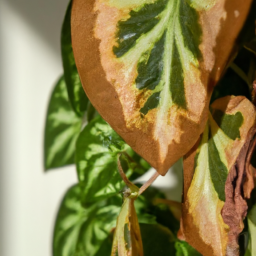
Tips for Treating Yellowing Leaves on Indoor Plants
Identifying the Cause of Yellowing Leaves
When your indoor plants start to develop yellow leaves, it can be a sign that something is not quite right with their care. There are several common reasons why indoor plants may experience yellowing leaves, including overwatering, underwatering, lack of sunlight, nutrient deficiencies, pests, or diseases.
Overwatering is a common issue that can lead to yellowing leaves. When plants are watered too frequently or if they are sitting in waterlogged soil, their roots can suffocate and the plant may not be able to take up nutrients properly. This can result in yellowing leaves as the plant struggles to photosynthesize effectively.
On the other hand, underwatering can also cause yellowing leaves. When plants do not receive enough water, they may not be able to transport nutrients effectively throughout the plant, leading to yellowing leaves as a result of nutrient deficiencies.
Additionally, lack of sunlight can also cause indoor plants to develop yellow leaves. Plants need sunlight to photosynthesize and produce energy, so if they are not receiving enough light, they may not be able to produce enough chlorophyll, which can result in yellowing leaves.
Treating Yellowing Leaves
If you notice that your indoor plants are developing yellow leaves, it is important to take action to address the issue promptly. Here are some tips for treating yellowing leaves on indoor plants:
1. Check the soil moisture: Make sure to check the soil moisture of your plants regularly. If the soil is too wet, allow it to dry out before watering again. If the soil is too dry, make sure to water your plants thoroughly.
2. Adjust watering schedule: Depending on the type of plant and its specific needs, you may need to adjust your watering schedule. Some plants prefer to dry out slightly between waterings, while others may need more frequent watering.
3. Provide adequate sunlight: Ensure that your indoor plants are receiving enough sunlight to thrive. Consider moving them to a brighter location or supplementing with artificial grow lights if necessary.
4. Check for pests: Inspect your plants regularly for any signs of pests, such as spider mites, aphids, or mealybugs. If you notice any pests, take appropriate measures to control them, such as using insecticidal soap or neem oil.
5. Consider nutrient deficiencies: If you suspect that your indoor plants may be experiencing nutrient deficiencies, consider fertilizing them with a balanced houseplant fertilizer. Be sure to follow the instructions on the fertilizer label and avoid over-fertilizing, as this can also cause yellowing leaves.
6. Prune damaged leaves: If your indoor plants have yellowing leaves that are severely damaged or beyond repair, consider pruning them off to encourage new growth.
Preventing Yellowing Leaves
In addition to treating yellowing leaves on indoor plants, it is important to take steps to prevent the issue from occurring in the future. Here are some tips for preventing yellowing leaves on indoor plants:
1. Establish a regular watering schedule: Develop a consistent watering schedule for your indoor plants based on their specific needs. Be sure to check the soil moisture before watering to avoid overwatering or underwatering.
2. Monitor light exposure: Pay attention to the amount of sunlight your indoor plants are receiving and adjust their placement accordingly. Rotate your plants periodically to ensure that they are receiving even light exposure on all sides.
3. Maintain proper humidity levels: Some indoor plants may benefit from increased humidity levels, especially during the winter months when indoor air tends to be drier. Consider using a humidifier or placing a tray of water near your plants to help increase humidity.
By following these tips for treating and preventing yellowing leaves on indoor plants, you can help your plants thrive and maintain their vibrant green foliage. Remember to observe your plants regularly and adjust your care routine as needed to keep them healthy and happy.
Recap of this article
If you’ve noticed your indoor plants’ leaves starting to turn yellow, don’t panic just yet! There are a few common reasons why this might be happening, and with a little bit of care and attention, you can often remedy the situation. One of the most common causes of yellowing leaves is overwatering. Plants need water to survive, but too much water can lead to root rot, which in turn can cause the leaves to turn yellow and eventually fall off. Make sure you’re allowing the soil to dry out slightly between waterings, and consider using a moisture meter to help you gauge when your plants actually need water.
Another potential cause of yellowing leaves is insufficient light. Just like humans, plants need sunlight to thrive, and if they’re not getting enough light, their leaves can start to yellow and droop. Make sure your plants are placed in a spot where they can get plenty of indirect sunlight, and consider rotating them occasionally to ensure all sides of the plant are getting adequate light. If you suspect that light might be the issue, consider investing in a grow light to help supplement your plants’ light needs. By addressing these common issues and adjusting your care routine accordingly, you can often help your indoor plants recover and thrive once again.
Q&A Corner:
Q1: Why are my indoor plant leaves turning yellow?
A1: Indoor plant leaves can turn yellow due to a variety of reasons, such as overwatering, underwatering, lack of sunlight, nutrient deficiencies, pests, or diseases. It’s important to identify the specific cause in order to address the issue effectively.
Q2: How can I prevent my indoor plant leaves from turning yellow?
A2: To prevent your indoor plant leaves from turning yellow, make sure you are providing the right amount of water, sunlight, and nutrients for your specific plant species. Regularly inspect your plants for pests and diseases, and address any issues promptly.
Q3: What should I do if my indoor plant leaves are already yellow?
A3: If your indoor plant leaves are already yellow, try to identify the underlying cause first. Adjust your watering schedule, lighting conditions, or fertilization routine accordingly. Trim off any severely damaged leaves to encourage new growth.
Q4: Can yellow leaves on indoor plants be saved?
A4: In some cases, yellow leaves on indoor plants can be saved if the underlying issue is addressed promptly. By providing the right care and treatment, such as adjusting watering or repotting the plant, you may be able to revive the yellow leaves and promote new growth.
Q5: When should I seek professional help for yellow leaves on my indoor plants?
A5: If you have tried adjusting your care routine and the yellowing of your indoor plant leaves persists or worsens, it may be time to seek professional help. A plant specialist or horticulturist can help diagnose the issue and provide specific recommendations for saving your plant.
Dr. Olivia Green is a botanist with over two decades of experience in indoor plant cultivation. She holds a Ph.D. in Plant Biology and has dedicated her career to researching plant behavior in controlled environments. Dr. Green is passionate about helping plant enthusiasts master the art of indoor gardening through her extensive knowledge and practical insights.

